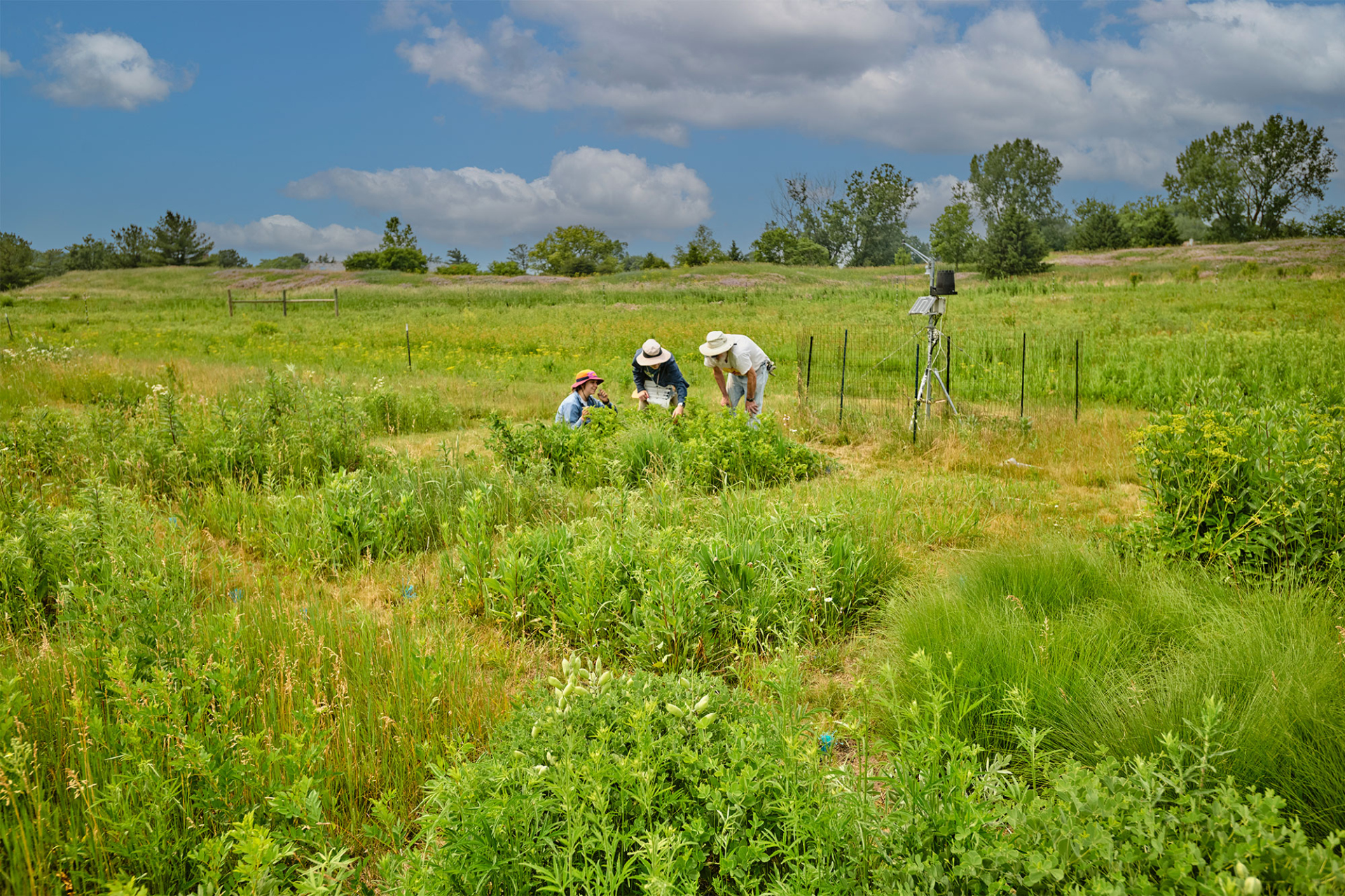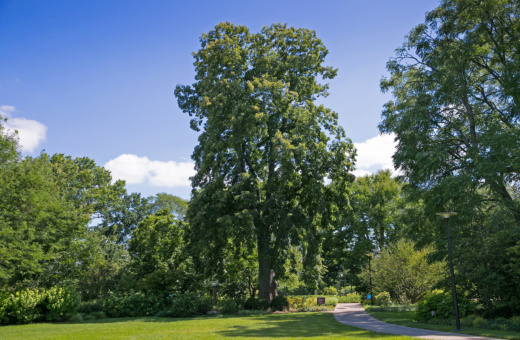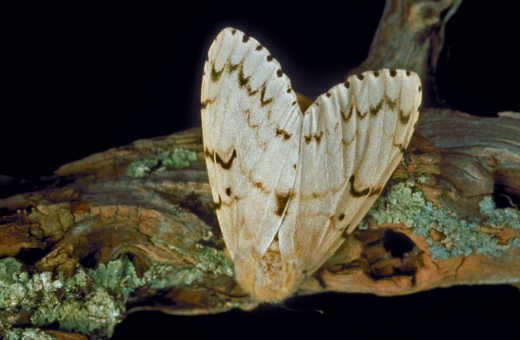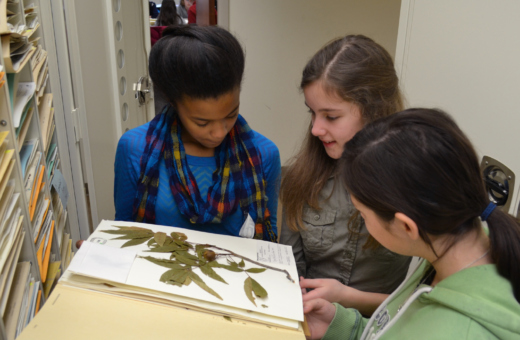A Place for the Nitty-Gritty of Tree Science
In a field tucked away behind the scenes at The Morton Arboretum is a patch of small bur oak trees, most of them shorter than a person. These little trees have a big purpose: to help scientists figure out how oak trees’ genetic variation influences their adaptation to different circumstances, such as climate change.
Nearby, plants including huge-leaved prairie dock and purple-flowering bee balm grow amid a profusion of native grasses in oddly regular square patches (above). It’s not a restoration, like the Arboretum’s Schulenberg Prairie. It’s a carefully controlled experiment to help scientists understand how the genetic relationships of prairie plants affect the way they spread and live together, and how they affect the microorganisms that live in the soil.
A short walk away, oaks and hickories 15 and 20 feet tall are planted in rows as regular as a cornfield. They are being grown to test ways to improve tree-care techniques.
This is Ware Field, home to the Arboretum’s backstage research plots, where plants are grown to answer scientific questions that are crucial to the future of trees and people. Down a winding dirt road—far from the stately tree collections, joyful event spaces, manicured gardens, and woodland trails that attract a million visitors to the Arboretum each year—the field is a place for the nitty-gritty. It gives scientists an outdoor laboratory for living experiments that may last years or decades.
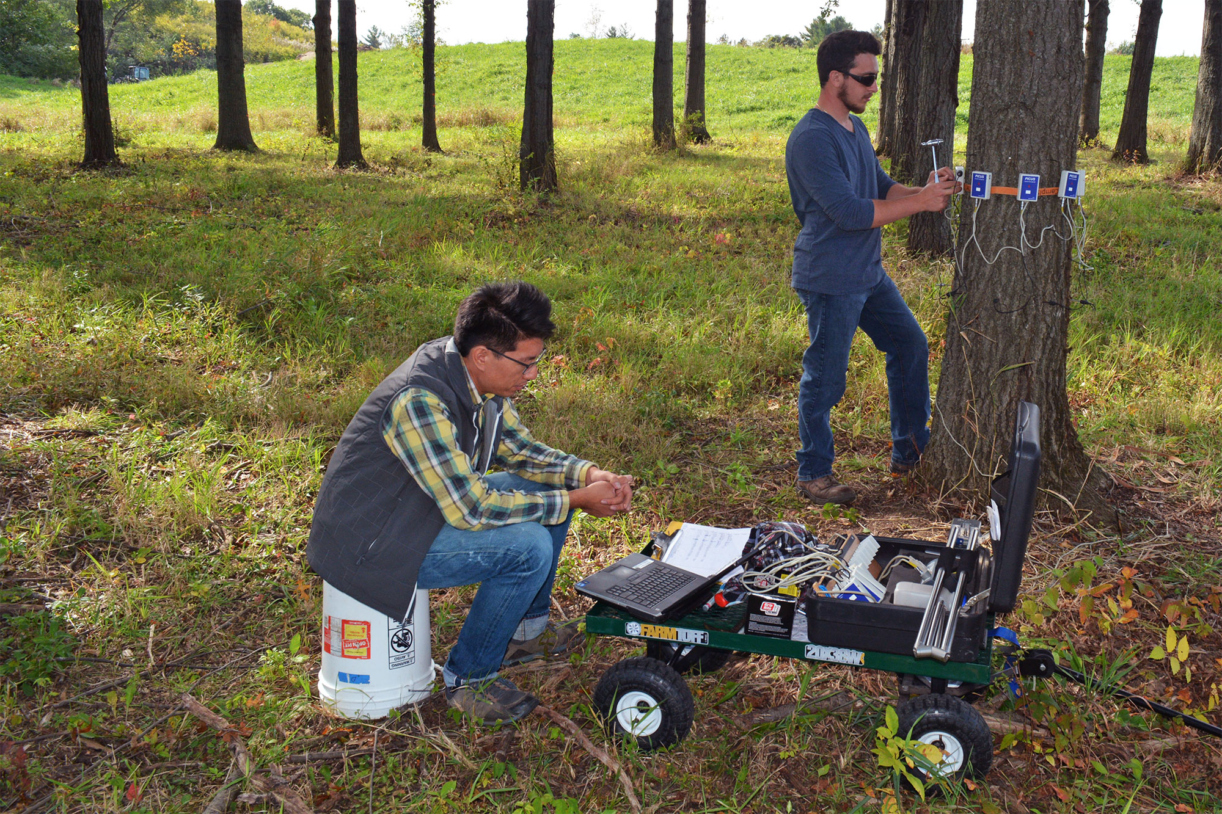
Ware Field, a nonpublic area of the Arboretum, provides researchers with a supply of trees they can use to investigate how trees grow and fail and what techniques work best to care for them.
“Part of what makes the Arboretum a leader in tree research is that we have this facility where we can invest space and time to watch how trees and other plants respond in the long term,” said Meghan Midgley, director of the Arboretum’s Center for Tree Science.
Trees grow slowly and often outlive people, which makes them hard to use for experiments when most science is funded by grants that last just a few years. The Arboretum, a century-old, privately funded nonprofit funded by private support, is one of the few institutions that can grow trees by the dozen for decades to serve science.
“It gives us a much longer time horizon, so we can ask questions many scientists would not be able to ask,” she said.
Ware Field is named for the late George Ware, PhD, the Arboretum’s first research director. He was widely known for his work in the 1970s and 1980s to find and introduce elm trees that could resist the deadly Dutch elm disease. Many thousands of disease-resistant elms of five varieties developed through his research now grow on the streets of Chicago and other cities.
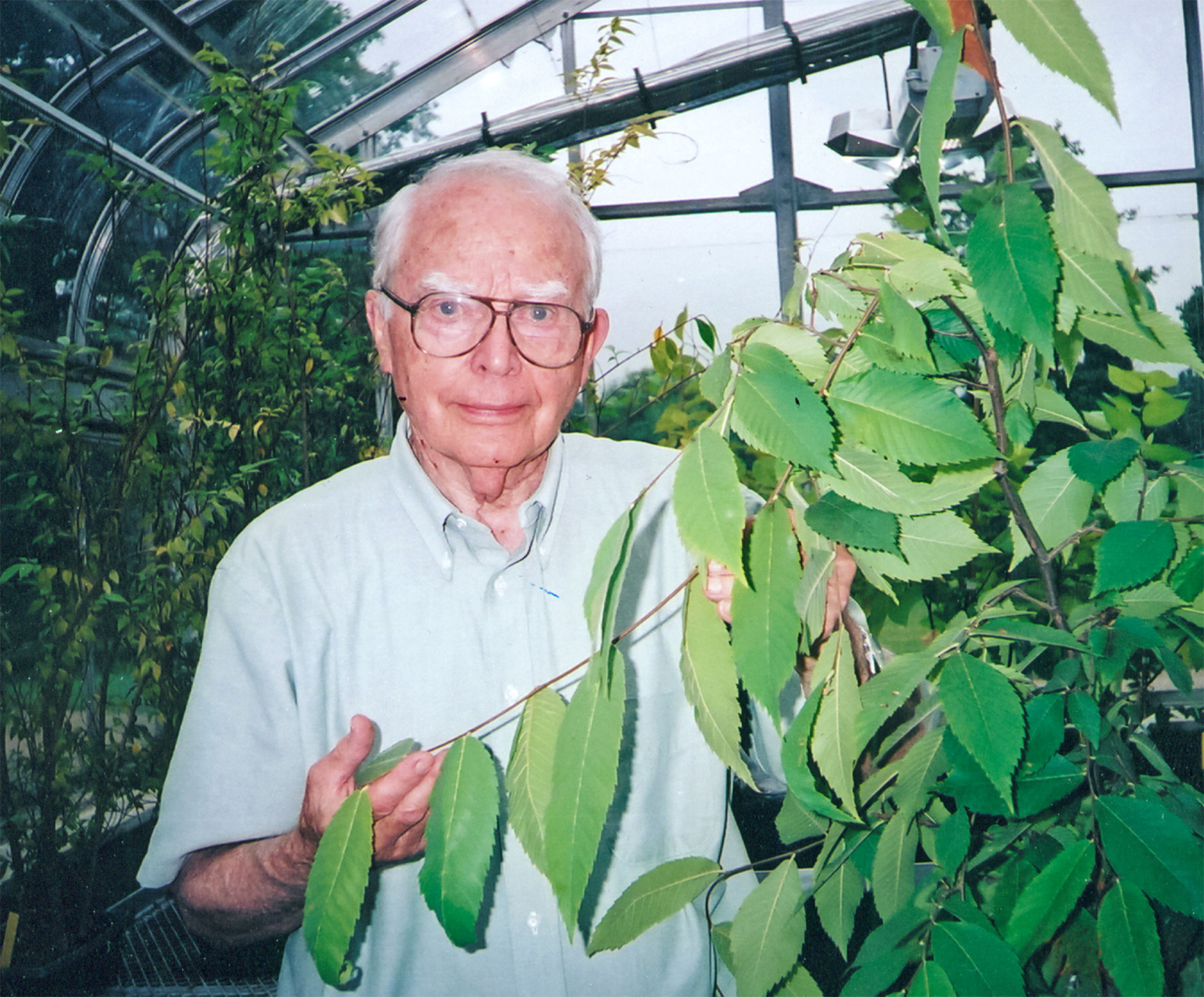
George Ware (1924–2010), the Arboretum’s first research director, was a pioneer in developing elm trees that could resist the deadly Dutch elm disease.
Like Ware, scientists today study trees all over the Arboretum, where the collections and natural areas offer them a splendid array of well-documented trees of species from all over the world. The researchers use a variety of techniques to explore questions about how trees grow, both above the ground and below it, how they fit into their ecosystems along with other organisms, and how they respond to changes in their environment. Although their instruments can sometimes be seen from the trails, they are careful to respect and protect the valuable trees.
In Ware Field, which is closed to the public, scientists have more control over how they plant and use trees. For example, to study the long-term effects of different pruning techniques, researchers need to try them out on living trees and then watch the trees for years to see what difference it makes. To learn how much force from stormy winds or heavy ice it takes to bring down tree branches, they need to break the branches of real trees. “A supply of trees you can experiment on is hard to find,” Midgley said.
Ware Field has another rare advantage: A dedicated research horticulturist to care for the plants.
Jon Steele’s job is different from the work of the horticulturists who make the Arboretum’s Grand Garden or Arbor Court beautiful for visitors by planting flowers and pruning shrubs.
“In an experiment, we want to make sure that everything is constant among the plants except for the variable we’re studying,” Steele said. For example, in a study testing whether a waste product from growing mushrooms might be useful as a soil amendment for urban trees, he has to make sure that all other factors, such as water and mulch, are held the same between the trees whose soil was amended and the untreated control trees.
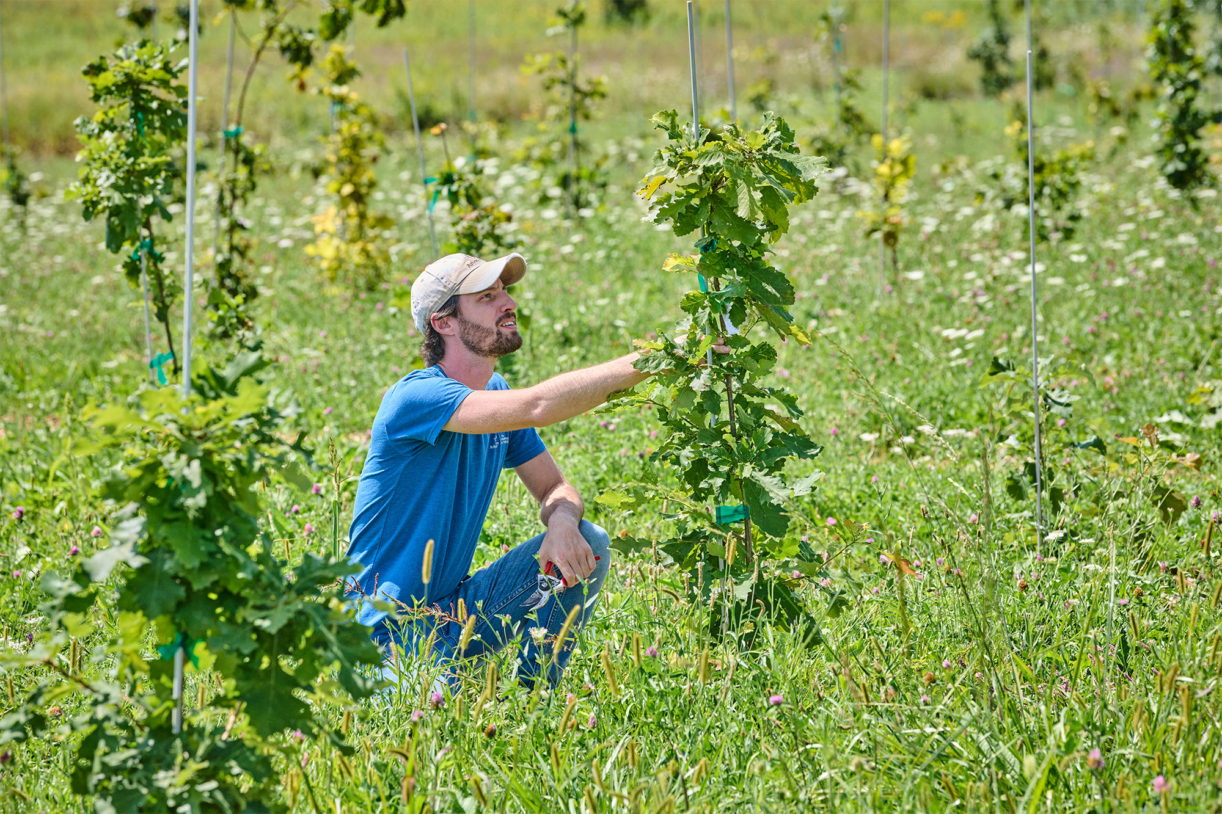
Jon Steele is the horticulturist tasked with caring for the experimental trees and other plants in Ware Field.
That nearby patch of young oaks is also a controlled experiment that Steele and the research staff must carefully tend to control variables. With similar plantings in Oklahoma and Minnesota, it is part of a common garden, in which the same tree species, collected from the wild, are planted in different environments and their growth monitored over time to see how it varies with conditions. Such common garden experiments, along with genetic analysis, can reveal how adaptable plant species are to such challenges as climate change.
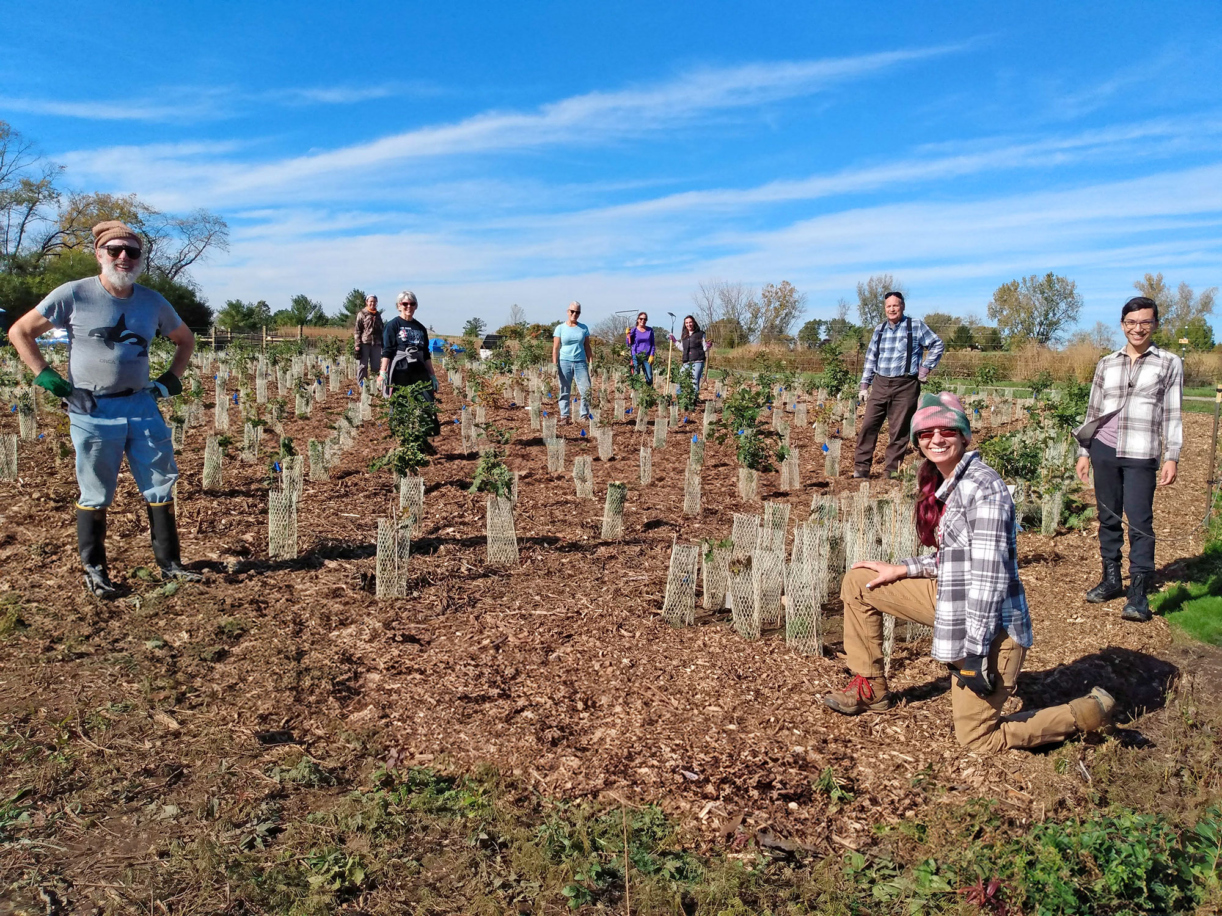
The hundreds of tiny oak trees planted in a common garden experiment are helping scientists understand how variable oaks are and how adaptable they might be to such challenges as climate change.
Steele also grows and tends seedlings and saplings for scientists studying disease resistance, genetic diversity, and other topics in the greenhouses of the Center for Tree Science.
Ware Field’s trees are not just for today’s scientists. “We’re planting trees now so that 30 years from now, somebody else will be able to come in and use them to ask innovative questions about arboricultural practices,” Midgley said. Improving those practices will help communities be healthier and more resilient by maintaining their trees. Trees that are cared for so they live long lives can help communities use less energy, manage rain from storms to reduce flooding, store carbon, shade streets, and provide a healthier environment for people.
Steele uses his knowledge, skills, and experience to contribute to the Arboretum’s research program and to make Ware Field an even greater resource for improving the knowledge and care of trees. “This is an institution that really cares about research and about doing it well,” he said. “There’s a lot of ambition in the science that is practiced here.”
